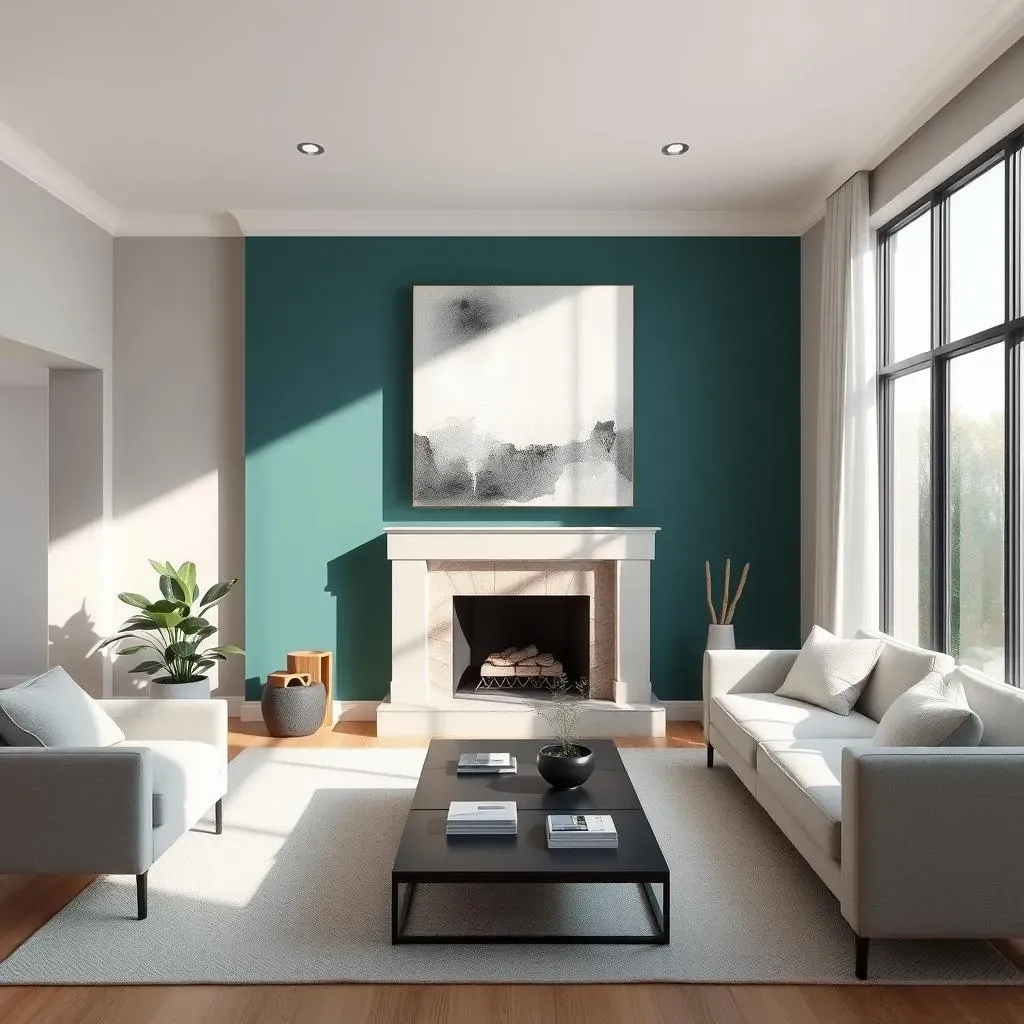Table of Contents
Ever wondered what is the best wall to paint an accent color? It's a question that plagues many homeowners looking to inject personality and style into their living spaces. An accent wall, when done right, can transform a room, adding depth, visual interest, and a touch of drama. But choosing the wrong wall can lead to a design disaster, making your space feel unbalanced or even smaller. This guide is your comprehensive resource for navigating the world of accent walls. We'll explore the key factors to consider when selecting the ideal wall, from architectural features and room layout to color psychology and personal style. Whether you're a seasoned DIY enthusiast or just starting to experiment with interior design, this article will equip you with the knowledge and inspiration to create a stunning accent wall that enhances your home's beauty and reflects your unique taste. Get ready to unlock the secrets to accent wall success!
Understanding the Purpose and Impact of Accent Walls
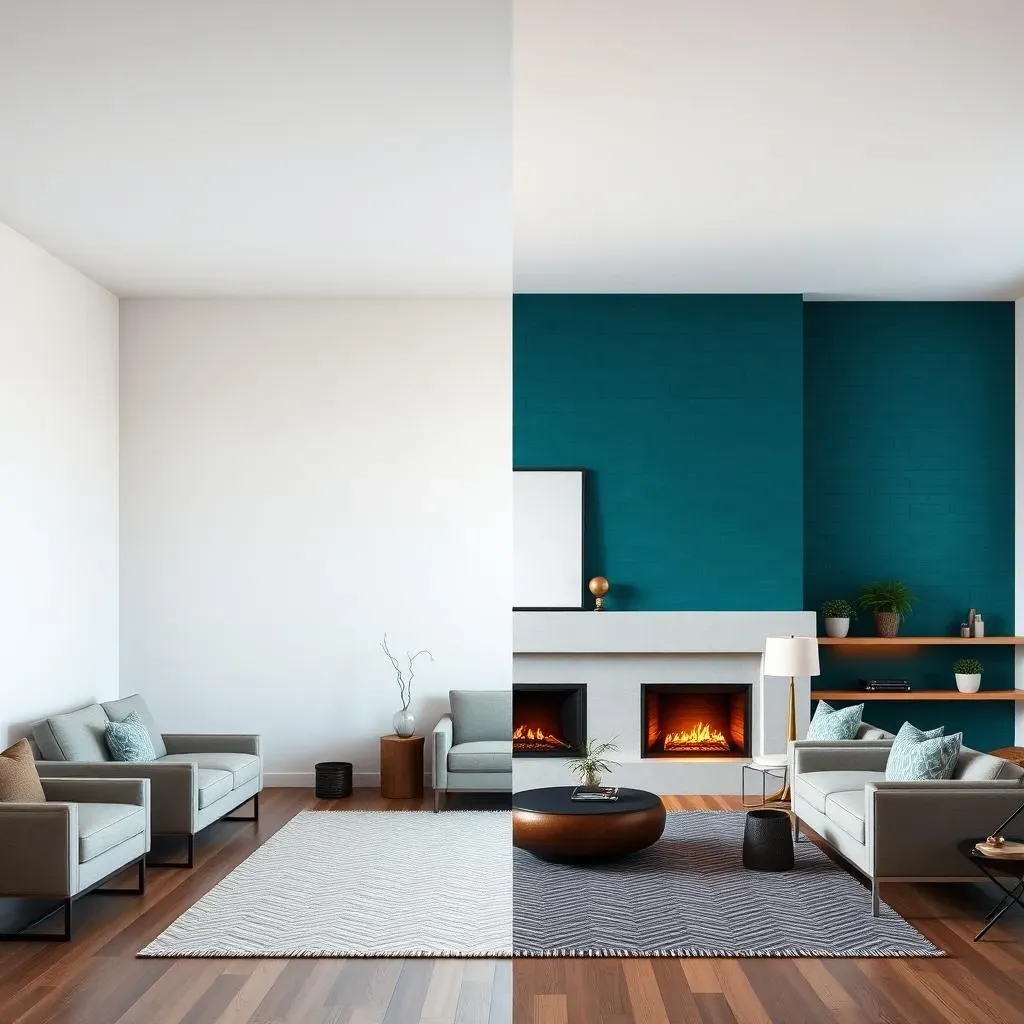
Understanding the Purpose and Impact of Accent Walls
Accent walls aren't just about slapping a different color on a single wall. They're strategic design elements that serve several key purposes. Think of them as a focal point, a way to draw the eye and create a sense of visual interest in a room. They can also be used to define a space, highlight architectural features, or even make a room feel larger or cozier. The impact of an accent wall goes beyond aesthetics; it can influence the mood and atmosphere of your home. A bold, vibrant color can energize a space, while a muted, calming hue can create a sense of relaxation.
Beyond aesthetics, accent walls play a crucial role in how we perceive a room's dimensions. A dark accent wall in a long, narrow room can visually shorten the space, making it feel more balanced. Conversely, a light-colored accent wall can make a small room feel more open and airy. Ultimately, the purpose of an accent wall is to enhance the overall design of your home, creating a space that is both visually appealing and functional. It's about adding that "wow" factor and personalizing your space to reflect your unique style and preferences.
For example, I once helped a friend transform their cramped living room with a deep teal accent wall behind the sofa. It instantly created a focal point and made the room feel much more inviting and stylish. The right color can really do wonders!
Factors to Consider When Choosing What Is The Best Wall To Paint An Accent Color
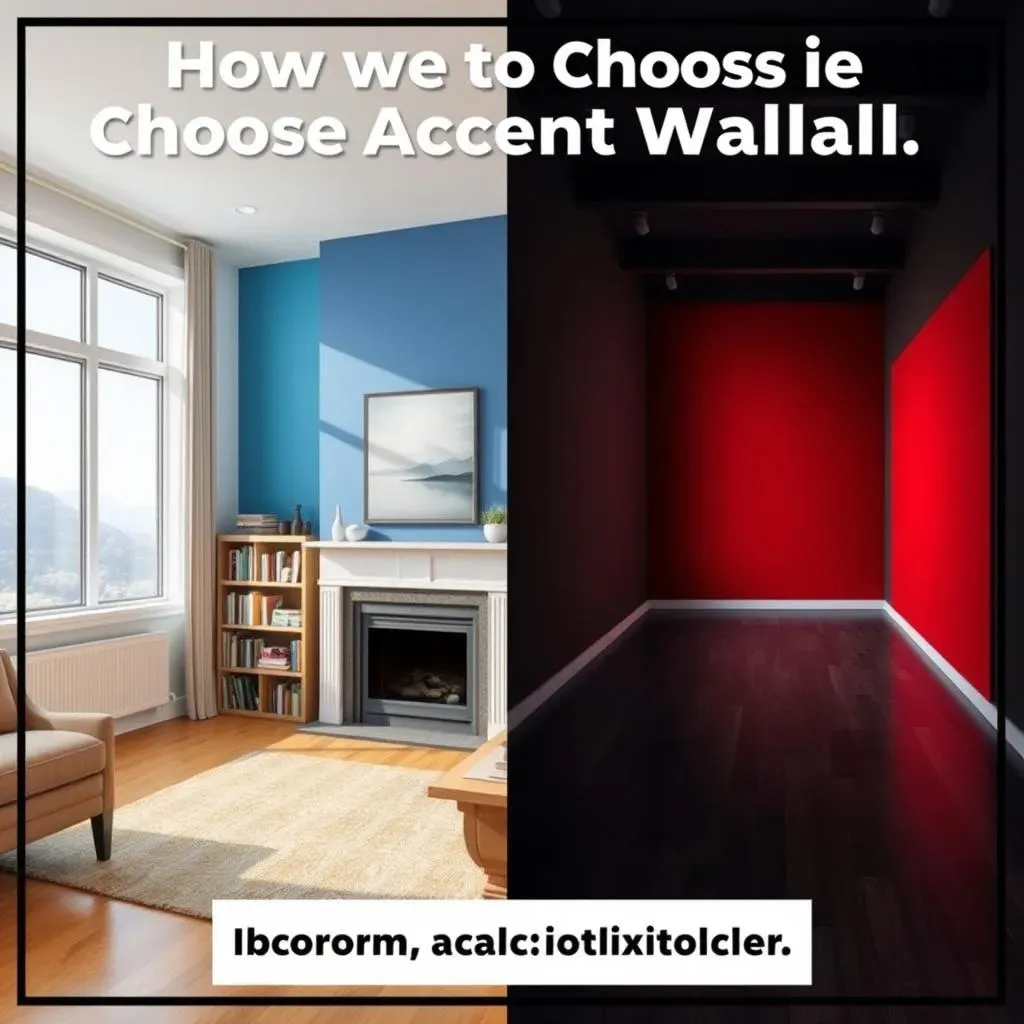
Factors to Consider When Choosing What Is The Best Wall To Paint An Accent Color
Focal Point and Architectural Features
When deciding what is the best wall to paint an accent color, start by identifying the room's natural focal point. This could be a fireplace, a large window with a stunning view, or even a built-in bookcase. Walls that already draw the eye are excellent candidates for accent colors, as they amplify the existing visual interest. Also, consider any architectural features, such as a vaulted ceiling, exposed brick, or interesting molding. Highlighting these elements with a contrasting color can enhance their unique charm and create a more dynamic space. Remember, the goal is to choose a wall that naturally commands attention and complements the room's overall design.
For example, if you have a beautiful brick fireplace, painting the surrounding wall a deep, contrasting color will make the fireplace stand out even more. Or, if you have a wall with a large, picturesque window, consider using a subtle, calming accent color to enhance the view and create a serene atmosphere.
Wall Size and Shape
The size and shape of a wall play a crucial role in determining its suitability as an accent wall. Large, uninterrupted walls generally work best, as they provide a blank canvas for showcasing a bold color or pattern. Avoid walls with too many doors, windows, or other obstructions, as these can break up the visual flow and diminish the impact of the accent color. Also, consider the proportions of the room. In a small room, a dark accent wall can make the space feel even smaller, while a light-colored accent wall can help to create a sense of spaciousness. Similarly, in a long, narrow room, painting one of the shorter walls a darker color can visually shorten the space and make it feel more balanced.
Think about it: A tiny sliver of wall between two doorways won't exactly scream "design statement," will it? You want a wall that can hold its own and really showcase that accent color. Walls without interruptions are generally a better fit.
Wall Characteristic | Suitability for Accent Wall |
|---|---|
Large, Uninterrupted | Excellent |
Small, Broken Up | Poor |
Long, Narrow | Consider proportions carefully |
Room Function and Color Psychology
The function of a room should also influence your choice of accent wall color. For example, in a bedroom, you might want to choose a calming, restful color like blue or green to promote relaxation. In a living room, you might opt for a more vibrant, energizing color like yellow or orange to create a social and inviting atmosphere. Also, consider the psychological effects of different colors. Blue is often associated with tranquility, green with nature and balance, yellow with happiness and optimism, and red with passion and energy. Choose a color that aligns with the room's purpose and the mood you want to create.
For instance, a vibrant red accent wall might be perfect for a home gym, providing a boost of energy and motivation. But it might not be the best choice for a bedroom, where a more calming and restful atmosphere is desired.
Styling Techniques and Design Tips for Accent Walls
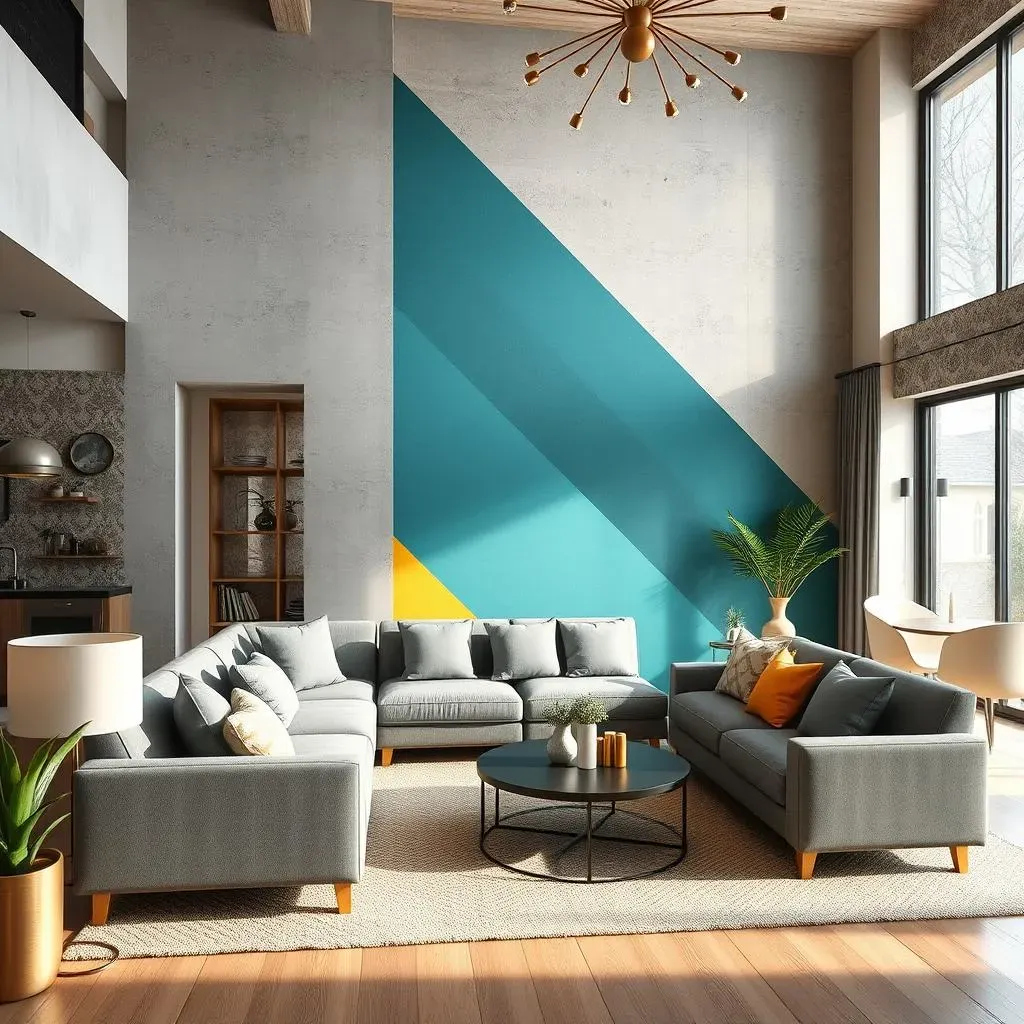
Styling Techniques and Design Tips for Accent Walls
Choosing the Right Color Palette
Selecting the perfect color is paramount when styling accent walls. It's not just about picking your favorite hue; it's about understanding how that color interacts with the rest of the room. Consider the existing color palette of your furniture, flooring, and décor. Do you want to create a harmonious blend or a bold contrast? A monochromatic color scheme, using different shades of the same color, can create a sophisticated and cohesive look. Alternatively, a complementary color scheme, using colors opposite each other on the color wheel, can add drama and visual interest. Don't be afraid to experiment with swatches and paint samples to see how different colors look in your space under different lighting conditions.
For example, if your living room is primarily decorated in neutral tones like gray and beige, you could add a pop of color with a vibrant teal or mustard yellow accent wall. Or, if your bedroom has a calming blue color scheme, you could use a lighter shade of blue or a complementary color like lavender for the accent wall. The key is to create a balance that feels both visually appealing and harmonious.
Color Scheme | Description | Effect |
|---|---|---|
Monochromatic | Different shades of the same color | Sophisticated, Cohesive |
Complementary | Colors opposite on the color wheel | Dramatic, Visually Interesting |
Analogous | Colors next to each other on the color wheel | Harmonious, Serene |
Incorporating Patterns and Textures
While solid colors are a classic choice for accent walls, don't underestimate the power of patterns and textures. Wallpaper, stencils, and even textured paint can add depth and dimension to your accent wall, creating a unique and eye-catching feature. Consider using a geometric pattern for a modern and contemporary look, or a floral pattern for a more romantic and traditional feel. Textured paint can add a subtle tactile element, creating a sense of warmth and sophistication. When incorporating patterns and textures, be mindful of the overall design of the room. Choose a pattern or texture that complements the existing décor and doesn't overwhelm the space.
For instance, a subtle damask wallpaper can add a touch of elegance to a dining room, while a bold geometric stencil can create a statement in a home office. Or, you could use a textured paint to mimic the look of exposed brick or concrete, adding an industrial-chic vibe to your living room.
Rules to Follow for a Cohesive Accent Wall Design
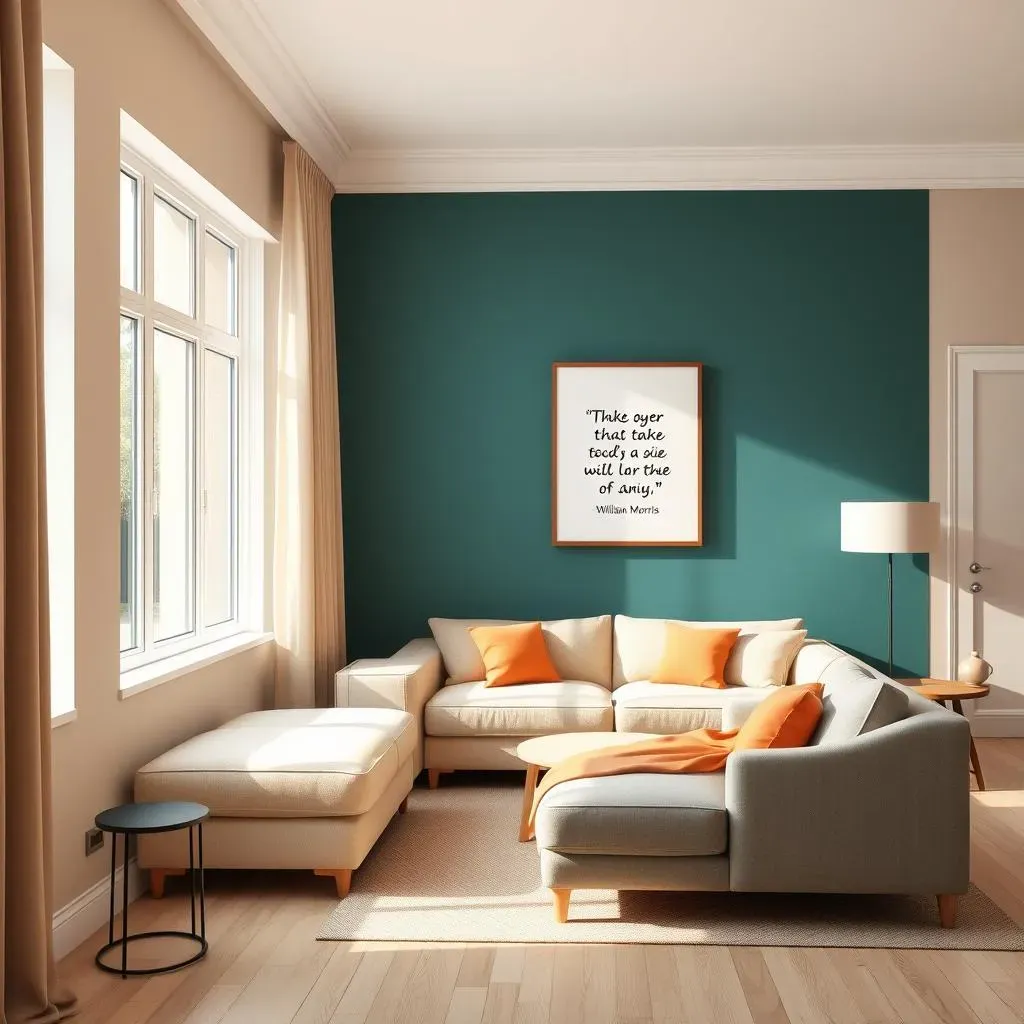
Rules to Follow for a Cohesive Accent Wall Design
Balance is Key
Creating a cohesive accent wall design isn't just about slapping on a bold color and calling it a day. It's about balance. Think of your accent wall as a statement piece, not a disruptive element. The color you choose should complement the existing color palette of the room, not clash with it. Consider the undertones of your furniture, flooring, and décor. Are they warm or cool? Choose an accent wall color that shares similar undertones to create a harmonious blend. Also, pay attention to the visual weight of the room. If one side of the room is already visually heavy, balance it out by placing the accent wall on the opposite side.
One of the most important rules is the 60-30-10 rule. This rule helps create a balanced and harmonious color scheme. The 60% is the dominant color, usually for the walls. The 30% is the secondary color, often used for furniture and curtains. The 10% is the accent color, which can be used for pillows, accessories, and, of course, your accent wall!
Consider the Lighting
Lighting plays a crucial role in how we perceive color. The same accent wall color can look completely different under natural light, artificial light, or a combination of both. Before you commit to a color, test it out in your space under different lighting conditions. Paint a large swatch on the wall and observe it throughout the day. Notice how the color changes as the sun moves across the sky. Also, consider the type of lighting fixtures in your room. Warm light can make colors appear warmer, while cool light can make them appear cooler. Choose an accent wall color that looks good under all lighting conditions.
- Natural Light: Observe how the color changes throughout the day.
- Artificial Light: Consider the warmth or coolness of your light bulbs.
- Combination: Ensure the color looks good under both natural and artificial light.
Creative Alternatives to Traditional Accent Walls
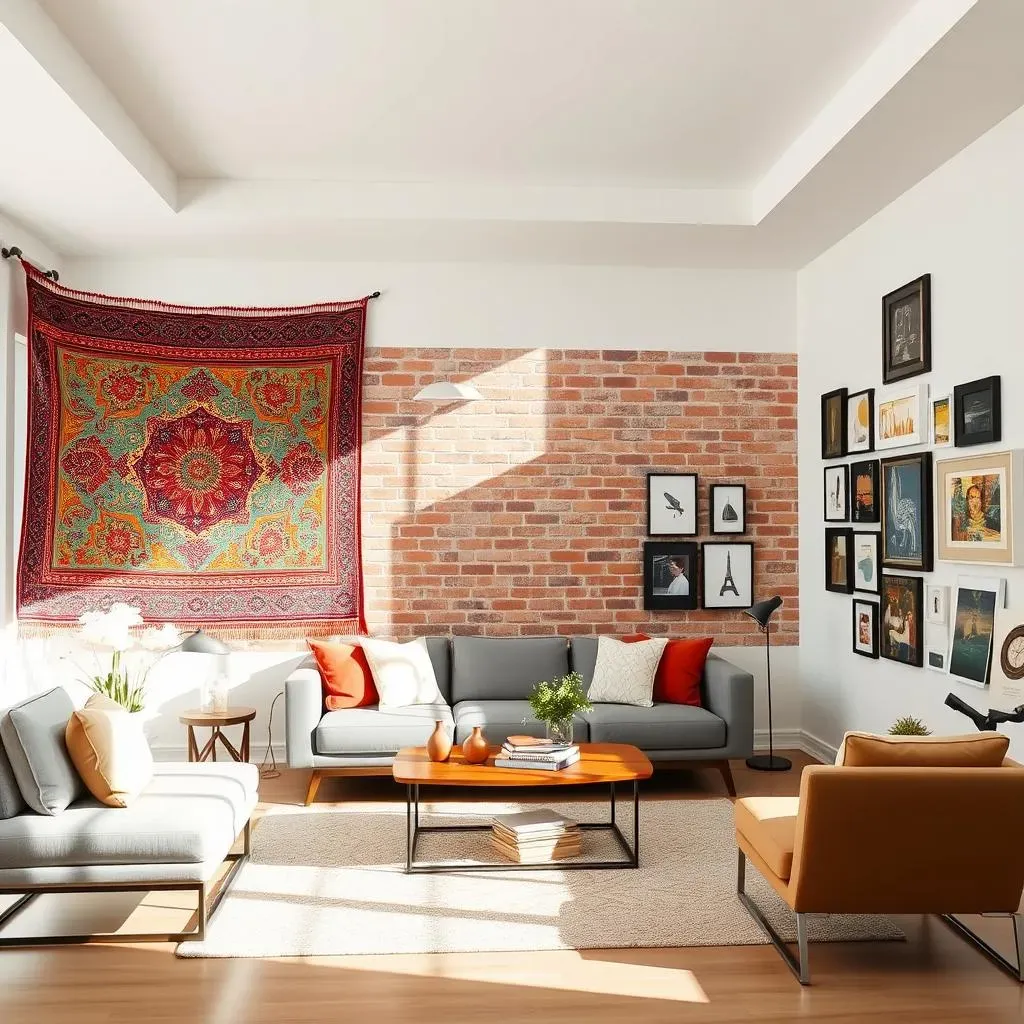
Creative Alternatives to Traditional Accent Walls
Large Wall Hangings
Tired of paint? Large wall hangings offer a fantastic way to add color, texture, and personality to a space without the commitment of an accent wall. Think tapestries, macramé art, or even a collection of framed textiles. These pieces can instantly transform a room, adding a bohemian vibe, a touch of elegance, or a bold statement, depending on the style and design. Plus, they're easy to swap out whenever you want to change up your décor. Unlike paint, wall hangings bring a tactile element to your walls, creating visual depth and warmth.
For instance, a vibrant, hand-woven tapestry can become the focal point of your living room, adding a global-inspired touch. Or, a minimalist macramé wall hanging can create a serene and calming atmosphere in your bedroom. The possibilities are endless!
Peel-and-Stick Wallpaper
Peel-and-stick wallpaper has revolutionized the world of interior design, offering a renter-friendly and commitment-free way to add patterns, textures, and colors to your walls. Unlike traditional wallpaper, peel-and-stick wallpaper is easy to install and remove, making it a perfect option for those who like to change up their décor frequently or who are living in a rental. With a wide range of designs available, from geometric patterns and floral prints to faux brick and wood textures, peel-and-stick wallpaper allows you to create a stunning accent wall without the hassle of traditional wallpaper installation.
I helped my sister update her apartment. She used a peel-and-stick wallpaper that mimicked a brick wall. It created an industrial, modern look without the mess of real brick. It's such a convenient and stylish alternative!
- Easy Installation: No paste or special tools required.
- Removable: Perfect for renters or those who like to change their décor.
- Wide Variety of Designs: From geometric patterns to faux textures.
Large Artwork or Gallery Walls
A single, large piece of artwork or a carefully curated gallery wall can serve as a stunning alternative to a traditional accent wall. A large painting, photograph, or sculpture can instantly become the focal point of a room, adding color, texture, and personality. Gallery walls, consisting of a collection of smaller artworks, photographs, and prints, offer a more personalized and eclectic approach. When creating a gallery wall, consider the overall color scheme and theme of the room. Choose artwork that complements the existing décor and reflects your personal style. Arrange the pieces in a visually appealing way, paying attention to balance and symmetry.
Think about it: A bold, abstract painting can transform a minimalist living room, while a gallery wall featuring family photos can add warmth and personality to a hallway. The key is to choose artwork that speaks to you and enhances the overall design of your home.
Alternative | Benefits | Considerations |
|---|---|---|
Large Wall Hanging | Adds texture, easy to swap | Style should match room |
Peel-and-Stick Wallpaper | Renter-friendly, easy to install | Quality can vary |
Large Artwork/Gallery Wall | Personalized, adds character | Requires careful curation |
Conclusion: Mastering the Art of the Accent Wall
Selecting the best wall to paint an accent color is more than just a design choice; it's about creating harmony and visual appeal within your space. By carefully considering factors like room dimensions, natural light, existing décor, and personal preferences, you can transform a simple wall into a stunning focal point. Whether you opt for a bold, contrasting hue or a subtle, textured finish, the key is to ensure that your accent wall complements the overall aesthetic of your home. With the knowledge and inspiration provided in this guide, you're now equipped to confidently embark on your accent wall journey and create a space that truly reflects your unique style and personality.
